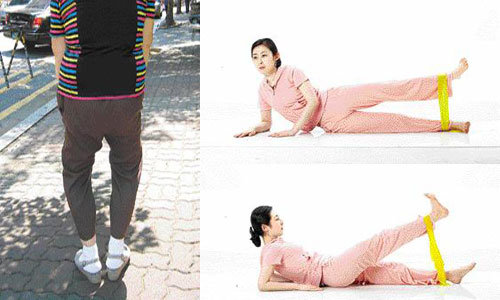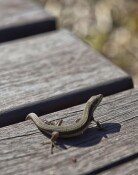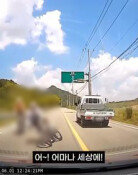Arthritis and O-Shaped Legs

An elderly lady Shin, 59, first felt pain in her knees five years ago. Now, her pain cripples her to almost a sedentary lifestyle. Her legs have bent inward, making her walk like that of a penguin. Finally, she consulted a doctor. Her arthritis had advanced and surgery was necessary.
Quite a number of degenerative arthritis patients have inward-bent legs like Shin. Most of them, however, do not understand how serious the symptom is. Many people misidentify arthritis treatment with artificial joint implants. Thats why they sit on their hands until the last minute. We consulted arthritis specialist Jeong Gwang-am, M.D., who heads the orthopedics department at Himchan Hospital for more accurate information and tips.
Asians more prone to O-shaped leg bending -
Asians than Caucasians are more prone to the O-shape bending. The sedentary lifestyle of Asians makes them more vulnerable.
In a squatting position, the knees get five times more pressure, and the contact area between the thigh and splint bones dwindle by half. With more pressure and less contact area, the cartilage therefore is exposed to more pressure over ones lifetime.
In 2001, an American medical professor at Northwestern University medical school conducted a research on 237 arthritis patients. The study showed that O-shaped legs accelerate arthritis progress on the inner sides of the legs.
The shape creates a chain of degradations, according to the study. Once arthritis sets in, it damages the cartilage more, which leads to more inward leg bending. Then the worsened shape promotes more arthritis. As a result, medical treatment cannot cure the advanced stage of the disease.
A western sedentary lifestyle recommended
To prevent O-shaping, doctors advise avoiding sitting on the floor as much as possible.
In other words, it is better to sit on chair. If one has to sit on floor, it is recommended to sit on as many cushions as possible, or maintain an upright upper body position with ones legs stretched out. In any case, doctors tell us to change position at least once every thirty minutes, and to stretch out our legs from time to time.
When we walk, we should make parallel steps on a straight line. It is advised to avoid high heels, platform shoes or unfit shoes, which cause instable walking. It is also wise to use a mop for cleaning than to use dust cloth on ones knees.
It is helpful to build up knee muscles and conduct stretching on a regular basis. Weak knee muscles put more pressure on the cartilage and accelerate the bending process.
Proper weight is also important. An additional 1kg equals four more kilograms on the knees walking on a level surface and seven more kilograms walking up stairs. If you divide your weight by height and get a dividend of 25 or less, you are safe in this respect.
The shorter between knees, the better for knees
O-shaped legs degrade rapidly. Thus, early treatment is required more than ever. Most patients, however, do not detect it early in its development.
When a person feels pain walking up and down a hill or stairs, or after a long walk or workout, or feels hot at the knees, it is highly possible that arthritis has advanced considerably. In this case, the person should see a doctor as soon as possible.
One can use another indicator. If a person stands with both feet touching each other and can pass a fist between the knees, he or she has an advanced form of arthritis. In this case, an advanced level of treatment is necessary.
If the cartilage is worn almost out, the patient has no other option than an artificial cartilage implant. But for patients in their 50s and 60s, doctors usually opt for another method. They conduct surgery to straighten out the bent splint bones. The straightened bones distribute pressure evenly over the joint, relieve the pain, and extend joint lifespan.
likeday@donga.com







